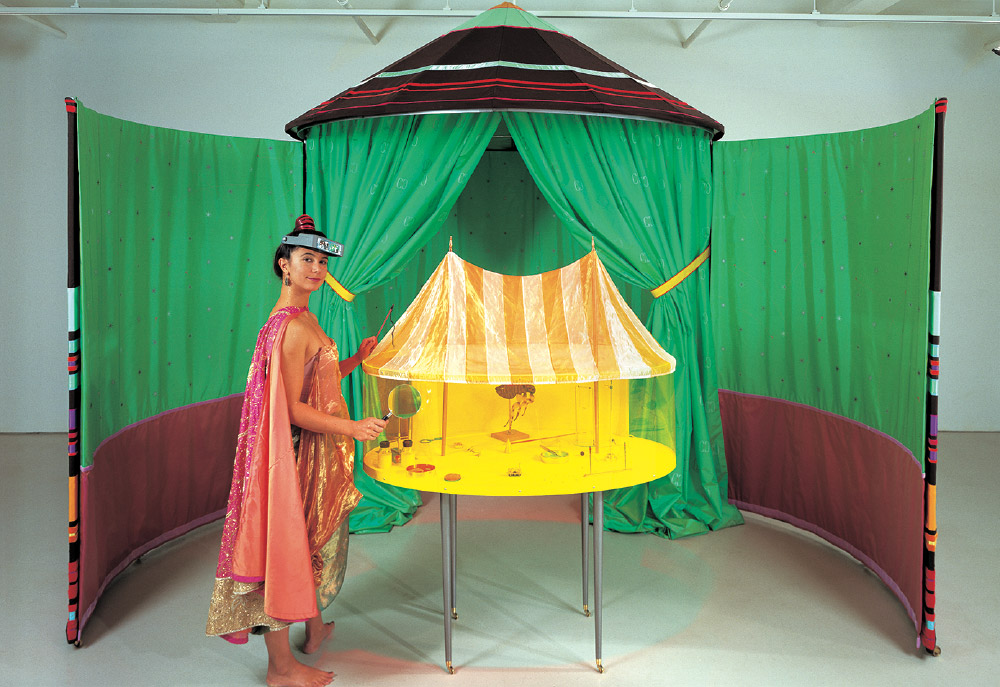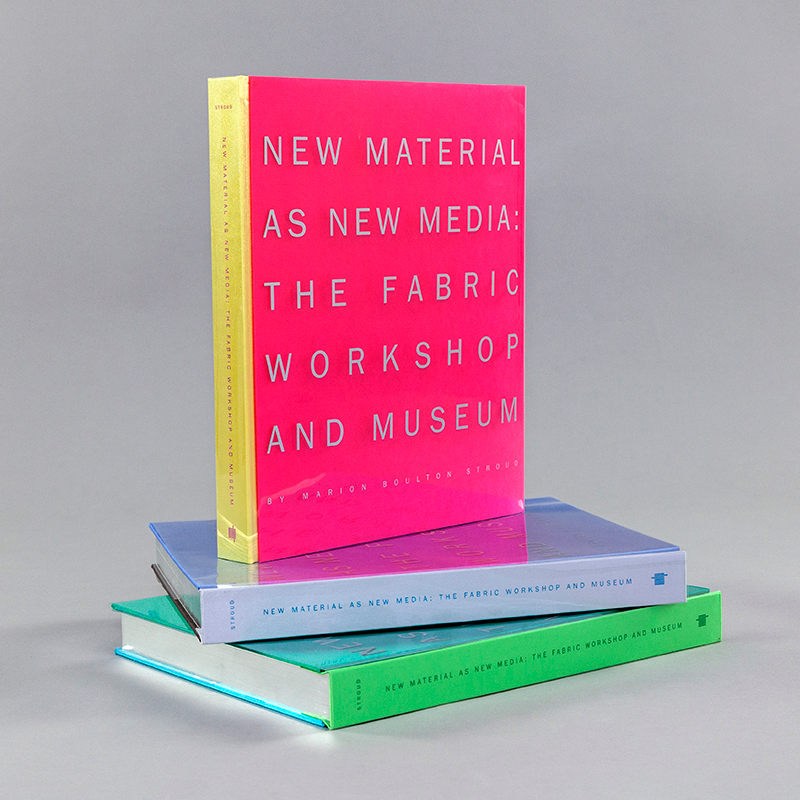Several years before realizing the idea of the Cardoso Flea Circus, Maria Fernanda Cardoso began researching the history of flea circus performances and teaching herself the lost art of training fleas. Popularized in the nineteenth century, flea circuses were novelty performances staged for small groups of onlookers; two varieties are documented—one that used “sleight of hand” to create the appearance of real fleas, and a second that used actual fleas. Cardoso, whose past sculptural investigations have often been inspired by the animal or once-living world (using such material as shells and bones), was interested in raising and training live fleas.
At FWM, Cardoso created the “big top” tent to heighten the performative aspects of the circus while also allowing for a sculptural installation to remain after the initial performance was over. Constructed from a variety of fabrics—canvas, taffeta, silk, rayon, cotton, and polyester—the tent is highly decorative and is embellished with painted portraits of the famous flea performers. A plexiglass arena, which serves as the staging ground for the fleas’ performances, is equipped with props such as cannons, netting, tall ladders with thimbles of water, and tightropes.
When performing Cardoso Flea Circus, Maria Fernanda Cardoso, dressed in circus attire, leads her fleas through a series of daring tricks, all of which are designed to accentuate the fleas’ natural responses to heat, light, and breath (carbon dioxide). The compelling acrobatic efforts of the fleas include dancing, tightrope walks, high dives, and weightlifting. Cardoso and her husband, video and filmmaker Ross Harley, created a video of the circus with FWM, which serves as a stand-in for the live performance and provides close-up views of the fleas performing their tricks.


